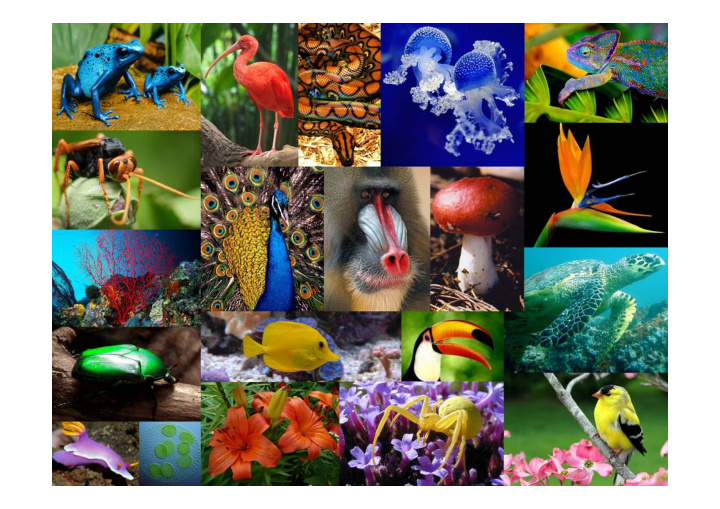



Biodiversity is life Biodiversity is our life
Global Biodiversity Outlook 3
Source: IUCN
Ecosystems approaching tipping points
October 2010: Nagoya Biodiversity Summit *18 650 accredited participants *427 side events
2011-2020 Strategy: Strategic Goals •Address the underlying causes of biodiversity loss •Reduce the pressures on biodiversity •Safeguard biodiversity at all levels •Enhance the benefits provided by biodiversity •Provide for capacity-building
2011-2020 strategy: Selected Targets •At least halve and where feasible bring close to zero the rate of loss of natural habitats including forests •Protect 17 per cent of terrestrial and inland water areas and 10 per cent of marine and coastal areas •Restore at least 15 percent of degraded areas •Make special efforts to reduce the pressures faced by coral reefs •Substantially increase in the level of financial resources in support of implementation of the Convention
2011-2020 strategy: Implementation •The “Aichi Target” will be the overarching framework on biodiversity not only for the biodiversity-related conventions, but for the entire United Nations system. •Parties agreed to translate this overarching international framework into national biodiversity strategy and action plans within two years •Actions in support will also take place at sub-national and local levels
Cities and Biodiversity action plan & Singapore Urban Biodiversity Index
Parliamentarians Development Cooperation Private donor forum South-South Cooperation
Nagoya Protocol on Access and Benefit Sharing Balances access to genetic resources based on prior informed consent with the fair and equitable sharing of benefits while taking into account the important role of traditional knowledge Proposes the creation of a global multilateral mechanism that will operate in transboundary areas or situations where prior informed consent cannot be obtained
The IPPC predicts that 30% of known species will disappear by the end of the century because of climate change (Image: Reuters/Marcus Prior)
The potential for sustainable land management practices to reduce emissions and increase sequestration of carbon is estimated at between 1 to 6 billion tons of CO 2 per year
Linking biodiversity loss, climate change and land degradation
The estimated global annual cost of biodiversity loss is close to USD 3 trillion Of all the anti-cancer drugs available, 42% are natural and 34% semi-natural Coral reef recreation has been estimated at USD 184 per visit globally, at USD 231-2,700 per hectare per year in Southeast Asia, and at USD 1,654 per hectare per year in the Caribbean The value of the watershed protection provided by intact coastal ecosystems has been estimated at USD 845 per hectare per year in Malaysia and USD 1,022 per hectare per year in Hawaii
Recommend
More recommend